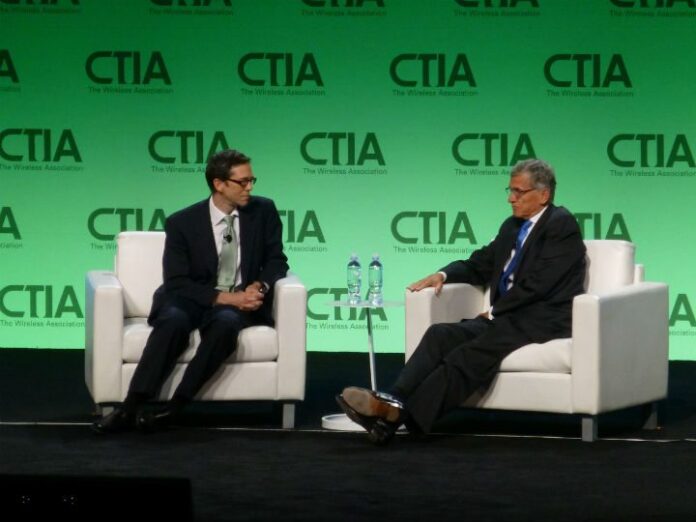Wheeler: Broadband access is key to economic opportunity, advancement
Despite criticism, FCC Chairman Tom Wheeler used the fall conference of the National Telephone Cooperative Association to push the Federal Communication Commission goal of universal broadband access.
“Simply put, in the 21st century, access to broadband is access to opportunity,” Wheeler said in his speech. “Consider a small business owner in a small town. The minute she connects her business to the Internet, she has access to global audience of potential customers. If you are a student and your rural high school doesn’t offer advanced calculus or physics, the Internet allows you to take a class online at a neighboring school or even MIT. If you live hours from the nearest hospital, a broadband connection allows you to be treated remotely by a world-class specialist. On the flip side, if your community isn’t connected, you are shut off from these opportunities. This hurts not only people in these communities; it hurts our nation. We are stronger when every American can contribute to our modern economy and the digital community created by the Internet. A network that leaves millions on the sidelines does not meet our joint responsibility of universal access. The primary means through which we achieve widespread deployment of robust broadband networks, of course, is private sector investment.”
NCTA is a non-profit advocate for small and rural broadband providers and has long been a ally of the FCC push for greater investment in rural broadband networks. Recently the FCC awarded $1.5 billion to 10 carriers under the Connect America Fund, a program designed to encourage build out of broadband infrastructure in low income or rural areas. Under terms of the agreement, each carrier has committed to bringing broadband speeds of at least 10 Megabits per second to 7.3 million rural customers over the next six years. Each carrier will need to build out 40% of funded locations by the end of 2017, 60% by the end of 2018, 80% by the end of 2019, and reach completion in 2020.
Wheeler acknowleged the progress that had been made: “We’ve seen significant private sector investment in broadband networks throughout the nation, and not just in the most densely populated cities in the country. Private industry – including those of you in this room – continues to invest billions of dollars to expand America’s broadband.” He went on to say, “Both fixed and mobile providers continue to improve broadband speeds, and current and new entrants to the market are investing and expanding broadband availability to many Americans with speeds in some locations exceeding 1 gigabit per second.”
However, the chairman noted several areas where build out has fallen flat. “The facts are – and you know this full well – that rural America is in many ways falling behind the broadband curve.” He said “In rural areas, more than half – 53 percent – lack access to broadband at speeds of 25 megabits per second down and 3 megabits per second up; in Tribal lands, many of which are served by rate-of-return carriers, it’s almost two thirds – 63 percent – that lack access. The disparity persists at all speeds. For example, even at only 4 megabits per second down and 1 megabit per second up, 20 percent of Americans in rural areas cannot get that level of service. By contrast, only 1 percent of Americans in urban areas lack access to that service.”
Wheeler went on to lay out four key planks to full universal access that have come to be through trial and error as well as numerous discussions in the FCC and with industry leaders. Those four tenets are:
- First, a voluntary path to using a cost-based model for support. This would be similar to the model approach that was adopted and has proven successful for price cap carriers, taking into account the circumstances of rate-of-return carriers.
- Second, for those carriers who choose not to go to the model, a new mechanism that replaces the old HCLS and ICLS mechanisms and ensures that carriers have the incentives and support to continue investing in robust broadband networks.
- Third, a transition period to the new mechanism that is timely, but reasonable. We know it represents change, and that a buffer needs to be built in to allow evolution to that new reality.
- Fourth, a budget for the program – including specific budgets on capital and operating expenditures that can be recovered through the program – as well as other steps to ensure that we are complying with the “Walden Rule” and using ratepayers’ funds as efficiently and effectively as possible.

